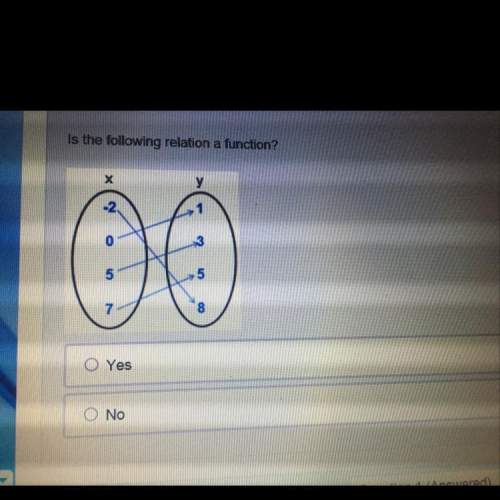Why does a liquid's rate of evaporation increase when the liquid is heated?
The surface...

Mathematics, 13.04.2020 23:31 nourmaali
Why does a liquid's rate of evaporation increase when the liquid is heated?
The surface area of the liquid is reduced.
The average kinetic energy of the liquid decreases as the temperature of the liquid increases.
The potential energy of the liquid increases.
More molecules have enough energy to overcome the attractive forces holding them in the liquid.

Answers: 1


Another question on Mathematics

Mathematics, 21.06.2019 13:30
The vertex of this parabola is at (-2, 5). which of the following could be it’s equation? a. y=3(x+2)^2-5 b. y=3(x-2)^2-5 c. y=3(x+2)^2+5 d. y=3(x-2)^2+5
Answers: 1

Mathematics, 21.06.2019 13:40
Imagine a new pasture with grass growing on it. every day after the seeds have germinated, the number of blades of grass in the pasture triples. after 18 days, the entire pasture is completely covered in grass. how many days did it take for the pasture to be one-third covered in grass?
Answers: 2

Mathematics, 21.06.2019 18:00
Agroup of students want to create a garden. they do not know the exact measurements but they propose using a variable to represent the length and width of the garden. the length of the garden is 10 feet longer than double the width. use a single variable to write algebraic expressions for both the length and width of the garden. write an algebraic expression for the area of the garden. use mathematical terms to describe this expression.
Answers: 3

Mathematics, 21.06.2019 18:40
Airplane speeds are measured in three different ways: (1) indicated speed, (2) true speed, and (3) ground speed. the indicated airspeed is the airspeed given by an instrument called an airspeed indicator. a plane’s indicated airspeed is different from its true airspeed because the indicator is affected by temperature changes and different altitudes of air pressure. the true airspeed is the speed of the airplane relative to the wind. ground speed is the speed of the airplane relative to the ground. for example, a plane flying at a true airspeed of 150 knots into a headwind of 25 knots will have a ground speed of 125 knots. the problems below refer to static and dynamic pressure. static pressure is used when a body is in motion or at rest at a constant speed and direction. dynamic pressure is used when a body in motion changes speed or direction or both. a gauge compares these pressures, giving pilots an indicated airspeed. in problem #s 1 and 2, use the following information. the indicated airspeed s (in knots) of an airplane is given by an airspeed indicator that measures the difference p (in inches of mercury) between the static and dynamic pressures. the relationship between s and p can be modeled by s=136.4p√+4.5. 1. find the differential pressure when the indicated airspeed is 157 knots. 2. find the change in the differential pressure of an airplane that was traveling at 218 knots and slowed down to195 knots. in problem #s 3 and 4, use the following information. the true airspeed t (in knots) of an airplane can be modeled by t=(1+a50,000) ⋅ s, where a is the altitude (in feet) and s is the indicated airspeed (in knots). 3. write the equation for true airspeed t in terms of altitude and differential pressure p. 4. a plane is flying with a true airspeed of 280 knots at an altitude of 20,000 feet. estimate the differential pressure. explain why you think your estimate is correct.
Answers: 2
You know the right answer?
Questions

English, 23.05.2020 08:57


Mathematics, 23.05.2020 08:57


Mathematics, 23.05.2020 08:57

Mathematics, 23.05.2020 08:57

English, 23.05.2020 08:57


Mathematics, 23.05.2020 08:57

Mathematics, 23.05.2020 08:57

Chemistry, 23.05.2020 08:57


Business, 23.05.2020 08:57




Physics, 23.05.2020 08:57






